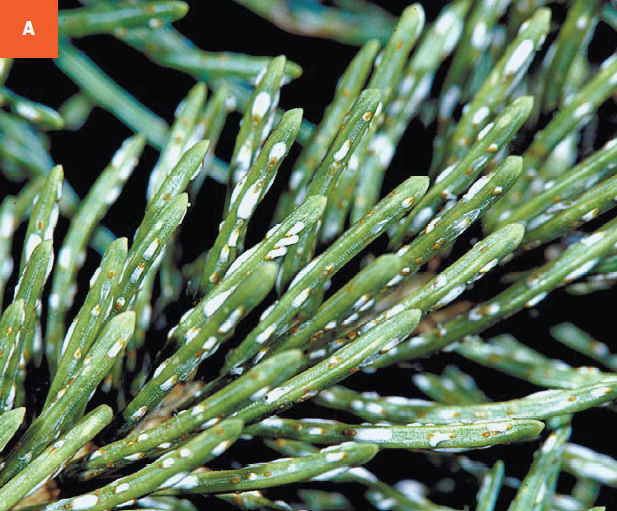Pine Needle Scale
Chionaspis pinifoliae
HOST Pine, spruce, Douglas-fir
DAMAGE/SYMPTOMS White scale coverings appear on the needles. Heavy infestations can cause yellowing, lack of vigor, and needle drop.
LIFE CYCLE The pine needle scale overwinters on the needles in several different stages under the armored shell of the female. Egg hatch occurs from late April to June, depending on the temperature. The crawler stage happens to coincide with lilac bloom. The scale nymphs settle on the needles and remain immobile for the remaining season. The white shell of the female is formed in late July.
MANAGEMENT Heavy infestations are often indicative of a stressed tree. Low populations of pine needle scale will not harm the tree, and predators are very important for control of the scale. If chemical control becomes necessary, a dormant oil can be applied before bud break (note: some oils can cause discoloration of spruce needles). Check for the active crawler stage by putting a white piece of paper underneath some pine branches and shaking the vegetation. If the crawlers are active (about the size of a pin head), they will fall and move on the piece of paper. Follow up with a contact spray for the crawler stage, if necessary.
A Scale infestation on needles. B Pine needle scale adults.


